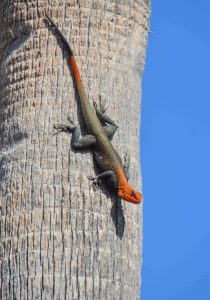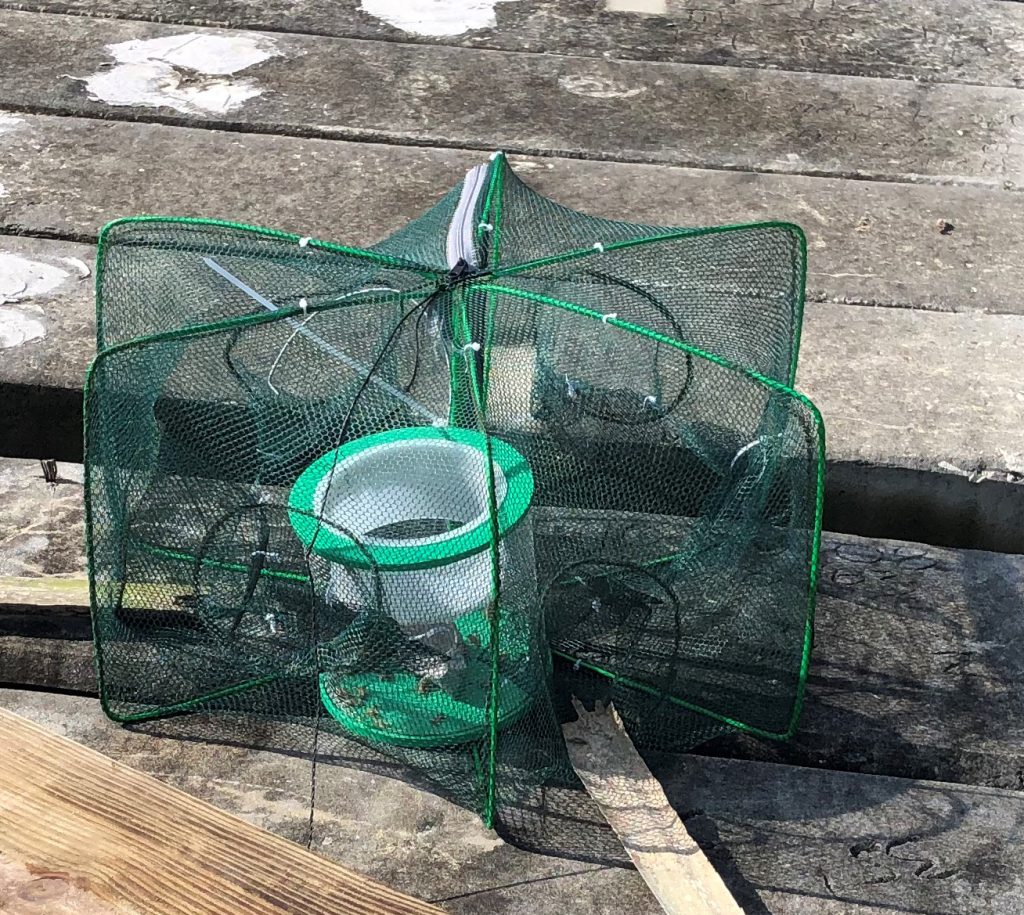
My Background
My name is Sean M. and I was born and raised in coastal SE Florida. I am currently a senior at the University of Florida studying Forest Resources and Conservation with a specialization in Protected Areas Management. I was informed in November of 2021 that I have received a slot for the University of Florida Institute of Food and Agricultural Science Extension Internship for the 2022 Summer. I have chosen to intern in St. Lucie County as it is close to home, and I have previous knowledge and experiences within the landscape. My summer internship will be under the mentorship of UF/IFAS Extension St. Lucie County extension agents Ken Gioeli (Natural Resources & Environment) and Kate Rotindo (Urban Horticulture). This is my internship shadowing experience developing a trap for nonnative Peters’s Rock Agama.
During my summer internship in St. Lucie County, I will be shadowing scientists at various organizations. My first shadowing experience was with Dr. Carey Minteer and her team conducting research on biological control of invasive earleaf acacia at the UF/IFAS Indian River Research and Education Center. My next internship shadowing experience was learning about how Florida Atlantic University at Harbor Branch Oceanographic Institute is using native sea vegetables for both human consumption and coastal restoration. I have since had the opportunity to go on a nighttime sea turtle excursion with Ecological Associates Inc. in Jensen Beach, Florida.
Background of this lizard

Credit: Pam Harting, Florida Master Naturalist
The Peters’s rock agama has made its presence known in South Florida and is believed to have become established after coming to the area through the pet trade (Gioeli and Johnson, 2020). This
species has been found in several counties along the southeast coast, with a couple sightings along the west coast of Florida. While there is some documentation of feral cats, hawks, and snakes eating smaller agama, the larger ones will not be targeted as much (Gioeli and Johnson, 2020). The males are brightly colored with shades of orange, red, blue, and violet on their bodies. This show of color becomes bold when male agama are reproductively active. Female agama have less showy brown pigment throughout their bodies.
Trapping
I have been working on a system to trap Peters’s rock agama throughout my time here as an intern and each time I have learned more about this lizard. One thing I saw every time was that they are not afraid to be near me. For instance, this past time I went with St. Lucie County Extension Agent Ken Gioeli, we had a juvenile male approach us and stay about ten feet from us. We were puzzled that this lizard came up to us and stayed near us for a bit. It should be noted that when we were studying agama in the field, we were often sitting quietly on the ground and nearly motionless. Typically Peters’s rock agama are wary of people.
The mesh trap itself is made for catching baitfish. We bought it online, but they are commonly found in bait shops. For agama bait, we bought crickets from a local pet store which are similar to the insects that agama would prey upon in nature. Trapping began when I found an area with agama present. I always had luck in areas that had lots of trees nearby or concrete structures for them to hide in. For trap placement, I would put some crickets outside of the bait bucket, this is because agama are visual predators. Being a visual predator means that they sit and wait for prey to move in front of them before running it down to consume it.
When the Peters’s rock agama would notice the crickets in the trap, they would approach cautiously. They would then begin probing the outside trying to find a way into the trap. Eventually, the lizard would find the ramp, which was just a piece of wood, and allowed them to enter. On the other hand, it also allowed a way for them to escape. This is because the weight of the ramp would also bring the net opening closer to the ground. There was success using this method, but the lizards would still be probing the sides.
*Disclaimer. Sean conducted this work in Summer 2022 when agama were actively feeding. I (Ken Gioeli) attempted this again in winter 2022 when the temperature was in the 60’s. The agama saw the crickets in the trap, but they just weren’t interested in feeding. I suspect it had to do with them being cold-blooded.
Since the probing was happening every time, the decision was made to cut the trap to make a little hole on the bottom of the trap for the lizards to enter. This worked better than the previous method. Once the agama entered the trap, it was unable to figure out how to get out. The size of the slit was 2.5 inches wide and 1.5 inches tall. This is the ideal size because the agama have no problem entering the trap and will not get caught in the mesh. The slit should be near the bait bucket, as that is the reason they are trying to get it.
Since this trap has six entry points, I took some screen material and bread ties to close off the holes. I made them into little doors, this way agama could still enter through them. I have also zip-tied the two closest holes to the bait bucket. This is to prevent the agama from climbing right into the top of the bait bucket and forces them to use the slit at the bottom.

Data Analysis
On the first trapping day, a male was seen adjacent to the trap, at the trap, or in the trap 11 times. 14 females were documented in the same time span. The second day of trapping had more promising numbers, with 13 males and 27 females. Between two days, a total of 24 males and 41 females were documented. Almost every time when the trap was placed, moved, or fresh crickets were added, the male agama would be the first one to go up to the trap. Once the male ran off after inspecting the trap, the females would come up to the trap. The male would be residing nearby.
In both trapping locations, there would only be one alpha male and a harem of three to five females with him. There is only one instance in which I documented two males within the survey area. I believe that these two males were fighting over the nearby females.
The data above reflects the total number of agama present and they were counted each time they entered the perimeter. There is no way to keep track of each agama once it leaves the surveying area.
FWC Humane Euthanizing Protocols
Extension Agent Ken Gioeli contacted the Florida Fish and Wildlife Conservation Commission (FWC) regarding humane euthanizing protocols since people make inquiries on this topic. FWC Permitting Specialist Gabe Prichard referred us to FWC specialist Jan Fore who provided instructions for humane euthanizing. Humane euthanizing protocols are the same as with many other nonnative reptiles and can be found online.
My Other Shadowing Experiences – Summer 2022 Internship
Summer Internship Shadowing Scientists Through the UF/IFAS Extension St. Lucie County
Works Cited
Gioeli, Kenneth T., and Steve A. Johnson. “Peters’s Rock Agama In Florida.” UF|IFAS Extension, University of Florida, 12 Oct. 2020, https://edis.ifas.ufl.edu/. Accessed 17 June 2022.
 3
3
